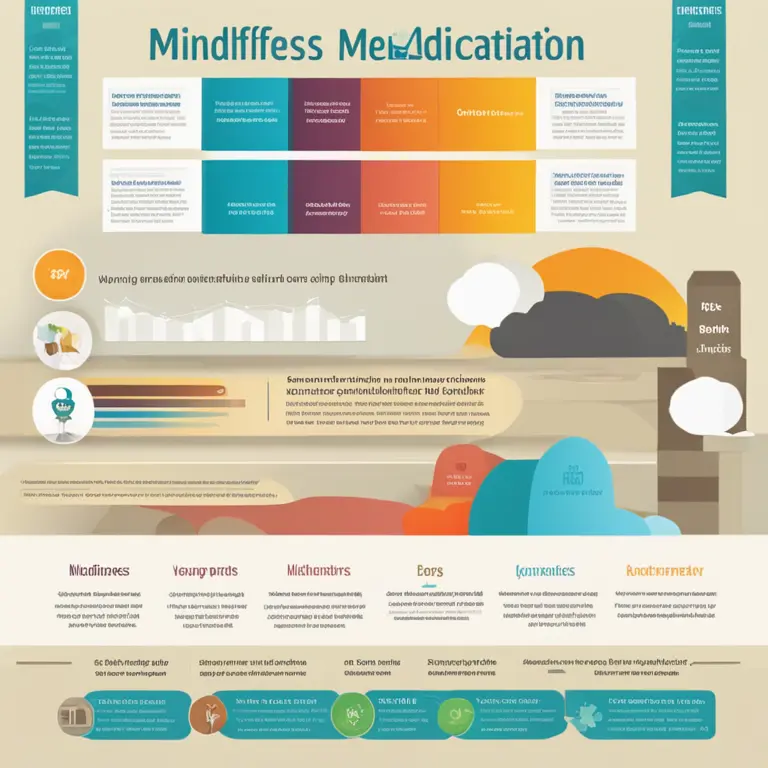
Mindfulness Meditation: Soothing Relief for Glaucoma Sufferers
Ease the strain of glaucoma through the serenity of mindfulness meditation. Learn how this practice can support eye health and overall wellness.
article by Hina Kurosawa
An Introduction to Glaucoma and Mindfulness
Glaucoma is a group of eye conditions that can cause vision loss and blindness by damaging the optic nerve. It's often linked to high eye pressure, although there can be other contributing factors. Coping with glaucoma can be stressful, with constant concerns about sight deterioration. Mindfulness meditation centers on the idea of being present and fully engaging with the moment without distraction or judgment. This article explores how mindfulness meditation can be a supportive practice for those living with glaucoma, contributing to overall well-being and potentially easing some symptomatic stresses.

Stress Reduction and Eye Pressure
Stress is known to affect intraocular pressure (IOP), a key factor in glaucoma. While mindfulness itself hasn't been proven to directly reduce IOP, it can diminish stress and anxiety. Maintaining a regular meditation practice helps to activate the body's relaxation response, often counteracting the stress response that is thought to exacerbate glaucoma progression. Engaging in mindfulness meditation could, therefore, be indirectly beneficial by fostering a more relaxed state of mind and potentially improving stress-related eye pressure variations.

Improving Overall Health and Habits
Embracing mindfulness meditation can also lead to healthier lifestyle choices, such as improved sleep patterns, better diet decisions, and increased physical activity. These indirect benefits can contribute to eye health, with regular exercise and a nutritious diet being integral to reducing risks associated with glaucoma. Moreover, mindfulness can enhance the effectiveness of glaucoma treatment by fostering adherence to medication schedules due to the heightened focus and self-awareness it promotes.

Meditation as an Adjunct Therapy
Mindfulness should be considered a complementary approach, not a primary treatment for glaucoma. It does not replace established medical therapies but can augment medical treatment regimens. Patients should always consult their health care providers before making any changes to their treatment plans. Meditation is an accessible, cost-effective, and non-invasive adjunct that can be easily included in daily routines without interrupting standard glaucoma management.

How to Practice Mindfulness Meditation
To begin practicing mindfulness meditation, find a calm space and sit in a comfortable position. Close your eyes and focus on your breath. As you breathe in and out, observe your thoughts and sensations without judging them. When your mind wanders, gently bring your focus back to your breathing. Start with short sessions of 5-10 minutes and gradually increase the duration. Consistency is key to cultivating the benefits of mindfulness, so aim to incorporate it into your daily routine.
Seeking Professional Guidance
For those new to meditation, seeking guidance from a mindfulness coach or a meditation app specifically designed for health-related concerns can be beneficial. These resources can provide structured meditation programs that cater to individuals with glaucoma, offering tailored assistance in managing the emotional and physical stress of the condition. Always remember that these resources should supplement, not replace, professional medical advice and treatments for glaucoma.
Published: 1/18/2024
Modified: 1/18/2024
More predictions
Come back here soon to learn more about yourself and your future


Exploring Meditation in Psychological Practice
Delve into the psychological perspective on meditation, its benefits, and applications in modern mental health practices.


How Meditation Reshapes Our Brains
Discover the transformative power of meditation and its profound impact on brain structure and function in this insightful article.


The Significance of Modern Meditation
Discover the crucial role meditation plays in fostering well-being, focus, and balance in today's fast-paced world.